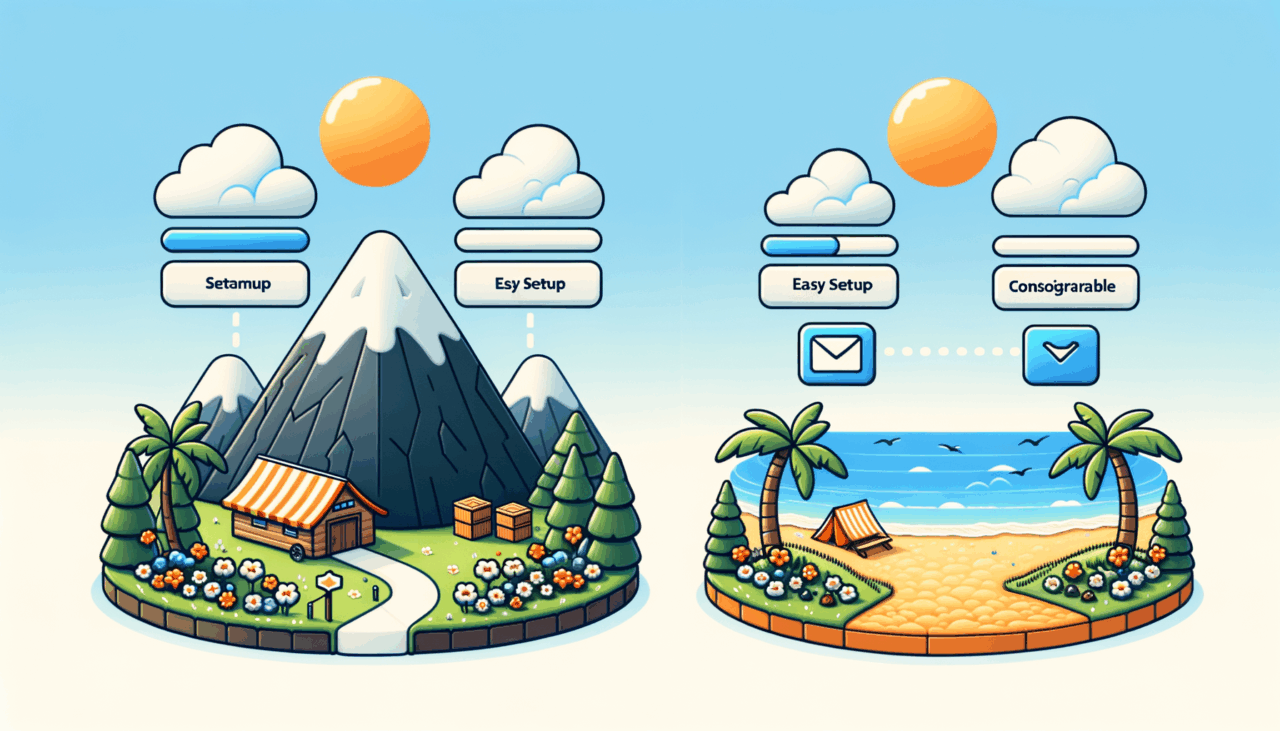G’day, folks! Darrin here, back at it again with another deep dive into the tech world. Today, we’re diving into the realm of email hosting, specifically focusing on the ease of setup and configuration for custom domains with Migadu and GoDaddy Email. If you’re like me, someone who appreciates both the old-school charm of a well-crafted email and the modern convenience of seamless setup, you’re in for a treat. Let’s get cracking!
Introduction to Email Hosting
Email hosting is like setting up your own virtual post office. It’s where your emails are stored and managed, and it allows you to have a custom email address that aligns with your domain name. This is particularly crucial for businesses and individuals looking to establish a professional online presence. To help you understand which service might suit you best, I’ve put together a comparative table and detailed descriptions of each provider’s characteristics.
Comparative Table: Migadu vs. GoDaddy Email
| Feature | Migadu | GoDaddy Email |
|---|---|---|
| Ease of Setup | Streamlined, no-frills setup | Wizard-based setup, user-friendly |
| Configuration | Manual configuration, flexible | Guided configuration, intuitive |
| Custom Domain Integration | Direct DNS record editing required | Automatic setup with GoDaddy domains |
| User Interface | Minimalistic, text-heavy | Graphical, beginner-friendly |
| Support and Documentation | Extensive documentation, community-driven | 24/7 customer support, extensive FAQs |
| Pricing | Pay what you want, scalable usage | Tiered pricing, bundled with other services |
Migadu: Characteristics
Ease of Setup
Migadu is like that trusty old toolbox in your shed—simple, effective, and gets the job done without unnecessary fluff. The setup process is straightforward but does require a bit of manual tinkering. If you’re someone who enjoys a hands-on approach and isn’t afraid of editing DNS records, you’ll find Migadu’s setup process refreshingly no-nonsense. However, bear in mind that it might not be everyone’s cup of tea, especially if you’re used to wizard-based setups.
Configuration for Custom Domains
Configuring custom domains with Migadu is akin to assembling a DIY project on a Sunday afternoon. It gives you the flexibility to set up things exactly how you want them. You’ll need to manually edit DNS records to ensure everything points in the right direction. This can feel a bit daunting at first, but Migadu offers extensive documentation and a supportive community to help you along the way.
User Experience
Migadu’s interface is minimalistic, focusing more on functionality than aesthetics. It’s like the plain black coffee of email hosting—no frills, just pure performance. This approach may not suit everyone, particularly those who prefer a more graphical interface. However, if you’re after efficiency and are comfortable navigating text-heavy interfaces, Migadu’s setup will feel like a breeze.
GoDaddy Email: Characteristics
Ease of Setup
GoDaddy Email is the virtual equivalent of having a helpful mate guide you through the process, step by step. Its wizard-based setup is designed with user-friendliness in mind, making it a breeze for beginners and seasoned users alike. If you own a domain with GoDaddy, the integration is even smoother, with automatic setups that save you precious time and effort.
Configuration for Custom Domains
When it comes to configuring custom domains, GoDaddy takes a more guided approach. It’s like having a GPS guiding you through unfamiliar territory. The platform provides intuitive guidance and support, making it easy to configure custom domains without breaking a sweat. It’s particularly handy for those who prefer a little hand-holding during the setup process.
User Experience
GoDaddy’s interface is akin to a well-organized workspace—everything is where you expect it to be. It’s graphical and beginner-friendly, offering a more visually appealing experience compared to Migadu’s text-heavy approach. The 24/7 customer support is a nice touch, ensuring that help is always at hand should you need it.
Conclusion
In the battle between Migadu and GoDaddy Email for ease of setup and configuration for custom domains, the choice ultimately comes down to personal preference and experience level. If you’re a hands-on type who enjoys the flexibility of manual configuration, Migadu might just be your go-to. On the other hand, if you prefer a more guided, user-friendly approach, GoDaddy Email is the way to go.
Remember, folks, the best tool is the one that fits your needs and comfort level. As always, feel free to share your experiences or any anecdotes in the comments below. Until next time, happy emailing!

Comments (0)
There are no comments here yet, you can be the first!